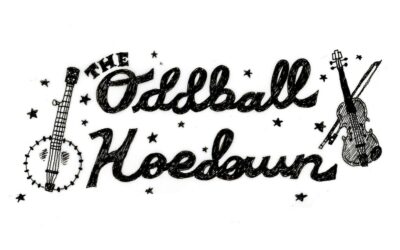I’ve sometimes wondered if someone would give me a book that would change my life. In “Almost Famous,” Anita Miller gives a box of records to her kid brother, and he becomes Rolling Stone’s youngest writer. Treatise on the Steppenwolf shaped Harry Haller’s whole identity. Bilbo handed Frodo his memoirs, and we know how that went. Me? Well, a few years ago Carol Davit, one of the best naturalists I know, sent me a link to a guidebook she edited. Due to complications including the leading author’s death, publication had been postponed and finally made available only as a PDF. I downloaded the file. Land Snails & Slugs of Missouri filled my screen. Maybe this was it. My new calling. Snail watching.
I did not want to be a serious snail-watcher. Life was busy. Plus, using a digital file as a field guide seemed antithetical to the way I normally thumb through guide books. Slimy snail fingers on my iPhone screen? No, thank you.
Then the pandemic hit. Time opened up. One day on a hike I crouched low to inspect two tiny snails clinging to a wet leaf. The shells were empty; no one was home. Perhaps, I thought, snails could teach me about the fragility of life. I brought them home to identify and was drawn into a new world.
Land Snails opens with a creation story: “The first man first began as a snail.” Although I found no such tale from primary sources of the Indigenous tribe the authors credit (they reference the Lewis & Clark papers), the authors’ attempt to mythologize the snail matches their reverence for gastropods throughout the guide book. The authors cover collecting methods, mollusk-mad naturalists (including sisters Frieda Schilling and Hessie Kemper, whose specimens live at major natural history museums), the geometry and vocabulary of shells, practical applications for snail and slug research (such as the study of the nervous system and learning) and evolutionary history. Personally, I was amazed to learn that slugs are more evolved organisms than snails. While snails depend on calcium-rich soil to form their shell, slugs can live in more diverse places. They maneuver easier. Our culture may not perceive slugs to be as desirable as snails, but they live free. I couldn’t stop thinking about this as a metaphor for materialism through the rest of the 2020 spring.
And throughout that cloudy, wet season I found that I couldn’t stop seeing slugs. Every outing spurred new observations, now that I had a guide to consult. When gray fieldslugs made lace out of our basil and peppers, I turned to the book and learned that garden menaces are usually not native species. Missouri-grown slugs would rather recycle dead matter than share in our fresh leaves. Identifying each species helps me understand how to live with them.
Near my house I found trees crowded at their bases with snails. Sometimes I tried using the guide to identify them. Their dark brown shells and black bodies ranged in size from that of a peppercorn all the way up to the size of my thumbnail. Did I hold a dusky button? Brown. Big whorls. “4 1⁄3 whorls” — a charming way to measure and compare their spiral asymmetry. But the opening was too big, and there was no lip to their shells. Things get more complicated from there. “Although very similar in appearance to Mesomphix firiabilis [brittle button!], the microsculpture of M. capnodes is very distinctive,” Oesch writes. “At high magnification, it has clear cut spiral and axial lines forming a regular pattern of microscopic highlights.”
This presented a dilemma. On one hand, if I had to use a microscope to determine differences, does such detailed identification really even matter? On the other hand, science invites us to consider the mysteries around us. Embracing the wonder of a world in snail-scale made me read closer and take the distinctions more seriously, even if I don’t retain the details of each shell’s sculpture.
Thus, snail study is not just for avid naturalists like Schilling or Kemper. It’s for people who believe they can strengthen bonds with their community by learning more about their neighbors. Snails and slugs experience the world in leaf bits and wood rot and ambivalence toward vertical inclines. That can be a happy place to be, especially in dark times.
As a writer of ecology, I love this book. It is full of vivid natural history, physiological traits and factors of the landscape. The common names alone gave me a new, poetic vocabulary: globular drop, cherrystone drop, slender walker and ice thorn. Plains snaggletooth, eightfold pinecone, rivercliff threetooth, lovely vallonia.
It’s a shame that MDC won’t print Land Snails, as they have with so many great guides (although the guide’s availability as a free download makes it wonderfully accessible). Medium notwithstanding, I must confess I’ll probably never be a great snail-watcher. Sometimes I do come home with a shell, wash my hands of soil and slime, open the PDF and try to enliven a specimen with a name. I always learn something just by looking. I always look to the ground with fresh eyes.



